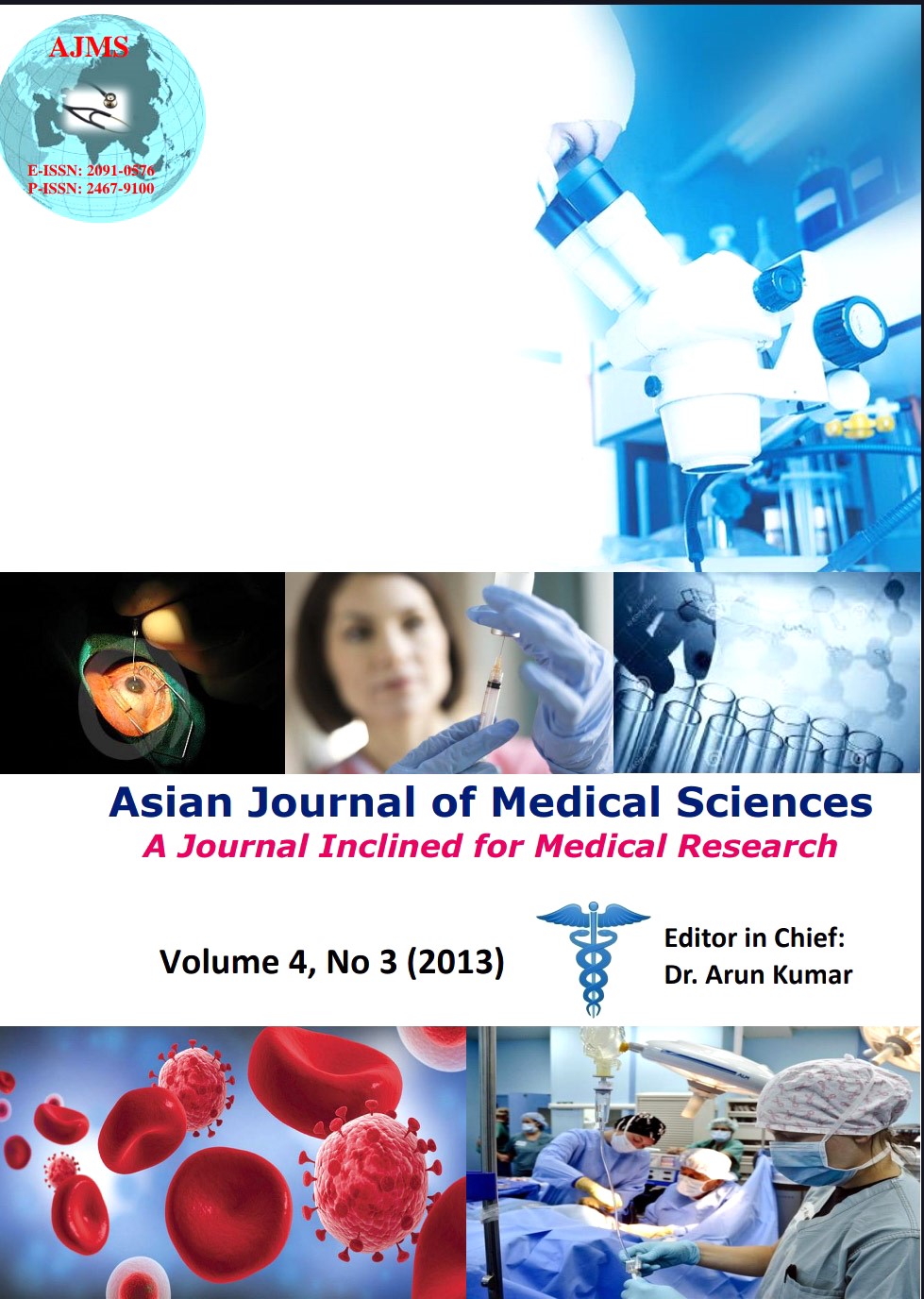Anthropometric indicators as predictors of high blood pressure among the Ao tribe of North-East India
Keywords:
Waist circumference, Body Mass Index, Waist-to-stature Ratio, Hypertension, AosAbstract
Objective: Hypertension is related to increased body fat, which can be evaluated by anthropometric indicators among the Aos, a tribe of North-East India.
Methods: Cross-sectional study with a sample of 1804 Ao adults (male= 890) (females= 914) aged 18 to 70 years. We considered the following anthropometric indicators: body mass index, waist circumference, waist-tohip ratio and waist-to-stature ratio. To identify predictors of high blood pressure, we adopted the analysis of receiver operating characteristic curves with a confidence interval of 95%.
Result: For males, the area under curve with confidence intervals were BMI = 0.691 (0.67-0.712); waist circumference=0.757 (0.739-0.775); waist-to-hip ratio=0.692 (0.671-0.713); waist-to-stature ratio = 0.763 (0.745-0.781) and Conicity index = 0.734 (0.716-0.716). For females, the values were BMI = 0.754 (0.732-0.776); waist circumference = 0.762 (0.74-0.784); waist-to-hip ratio = 0.690 (0.668-0.784), waist-to-stature ratio=0.776 (0.753-0.799) and Conicity index=0.722 (0.701-0.743). Different cut off points of anthropometric indicators with better predictive power and their relevant sensitivities and specificities were identified.
Conclusion: BMI does not show a very good area under the ROC curve. It seems that waist-to-stature ratio is the best predictor, followed by waist circumference and Conicity index among the males and results in high sensitivity and specificity to hypertension. We suggest the use of both waistto- stature ratio and waist circumference to predict hypertension among males. Among females, waist-to-stature ratio is the best predictor, followed by waist circumference and body mass index.
DOI: http://dx.doi.org/10.3126/ajms.v4i3.6275
Asian Journal of Medical Sciences 4(2013) 15-22
Downloads
Downloads
Additional Files
Published
How to Cite
Issue
Section
License
Authors who publish with this journal agree to the following terms:
- The journal holds copyright and publishes the work under a Creative Commons CC-BY-NC license that permits use, distribution and reprduction in any medium, provided the original work is properly cited and is not used for commercial purposes. The journal should be recognised as the original publisher of this work.
- Authors are able to enter into separate, additional contractual arrangements for the non-exclusive distribution of the journal's published version of the work (e.g., post it to an institutional repository or publish it in a book), with an acknowledgement of its initial publication in this journal.
- Authors are permitted and encouraged to post their work online (e.g., in institutional repositories or on their website) prior to and during the submission process, as it can lead to productive exchanges, as well as earlier and greater citation of published work (See The Effect of Open Access).




